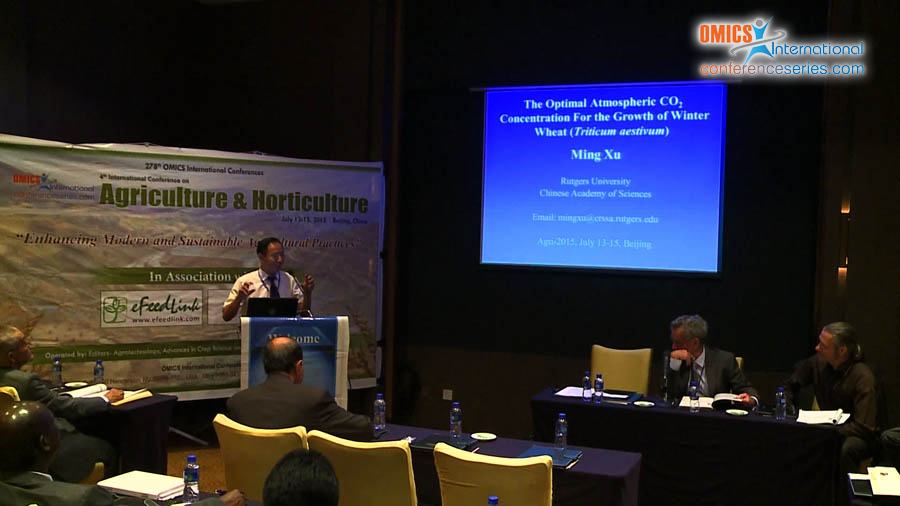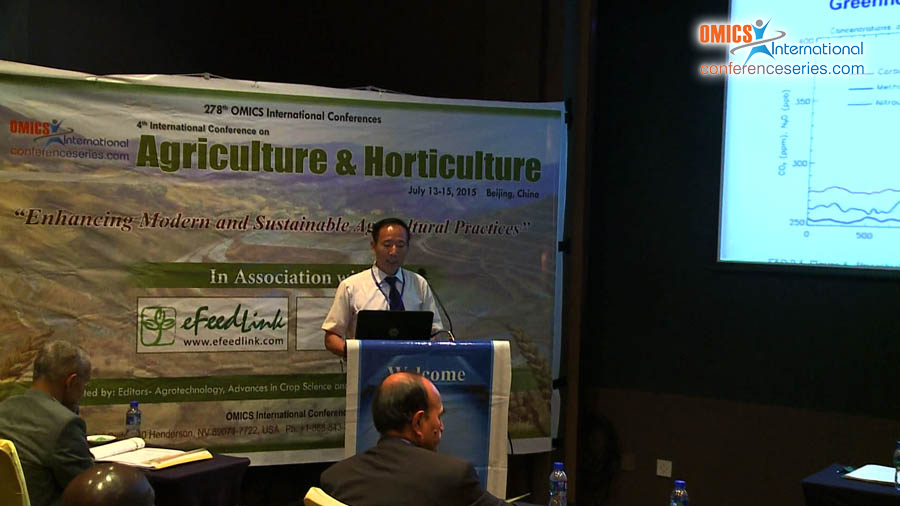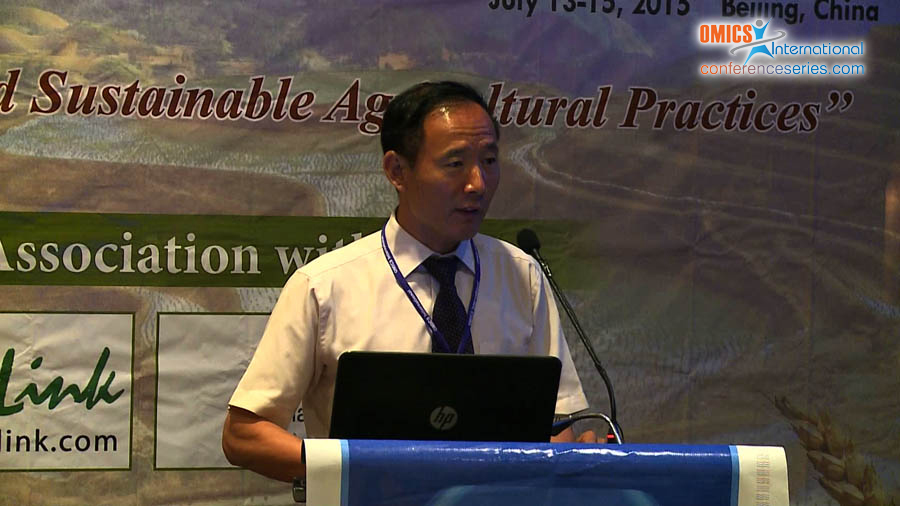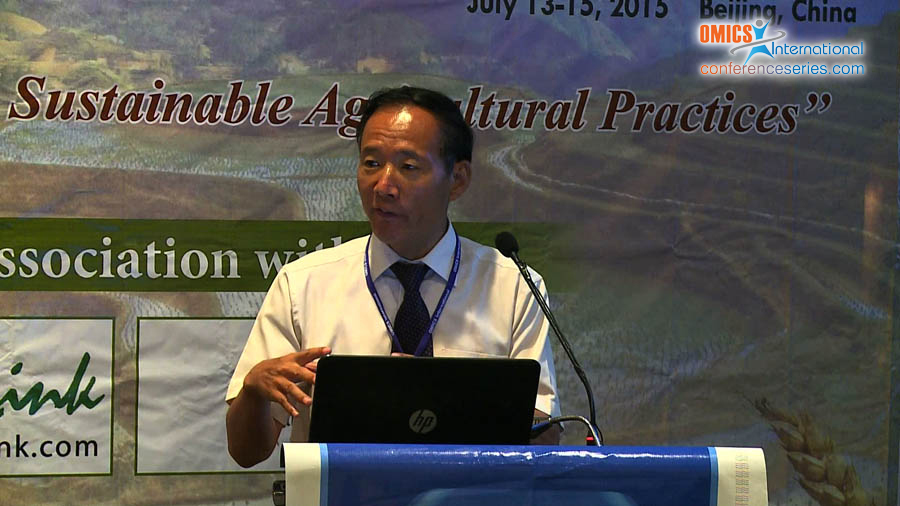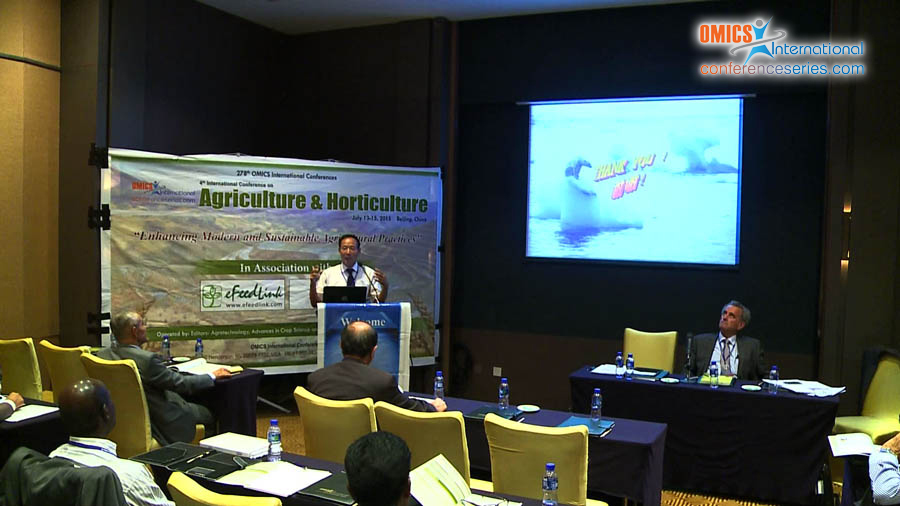
Ming Xu
Chinese Academy of Sciences
China
Title: The optimal atmospheric CO2 concentration for the growth of winter wheat (Triticum aestivum)
Biography
Biography: Ming Xu
Abstract
This study examined the threshold of CO2 fertilization effect on the growth of winter wheat with five growth chambers where the CO2 concentration was controlled at 400, 600, 800, 1000, and 1200ppm respectively. I found that initial increase in atmospheric CO2 concentration dramatically enhanced winter wheat growth through the CO2 fertilization effect. However, this CO2 fertilization effect was substantially compromised with further increase in CO2 concentration, demonstrating a threshold (the optimal CO2 concentration) of 889.6, 909.4, and 894.2ppm for aboveground, belowground, and total biomass, respectively, and 967.8ppm for leaf photosynthesis. Also, high CO2 concentrations exceeding the threshold not only reduced leaf stomatal density, length and conductance, but also changed the spatial distribution pattern of stomata on leaves. The spatial patterns of stomata were scale-dependent, a pattern of regularity at scales below about 150 micrometers, clustering beyond 220 micrometers, and random between the two scales. Elevating CO2 concentration led to more regular patterns of stomatal distribution at small scales (<150 micrometer), but little effect was detected on the clustering patterns at large scales (>220 micrometers). In addition, high CO2 concentration also decreased the maximum carboxylation rate (Vcmax) and the maximum electron transport rate (Jmax) of leaf photosynthesis. However, the high CO2 concentration had little effect on leaf length and plant height. The results indicate that climate change assessment models may overestimate the CO2 fertilization effect and, thus underestimate the potential threats of climate change on agriculture when atmospheric CO2 concentration exceeds the threshold. The threshold of CO2 fertilization effect found in this study can also be used as an indicator in selecting and breeding new wheat strains in adapting to future high atmospheric CO2 concentrations and climate change.

